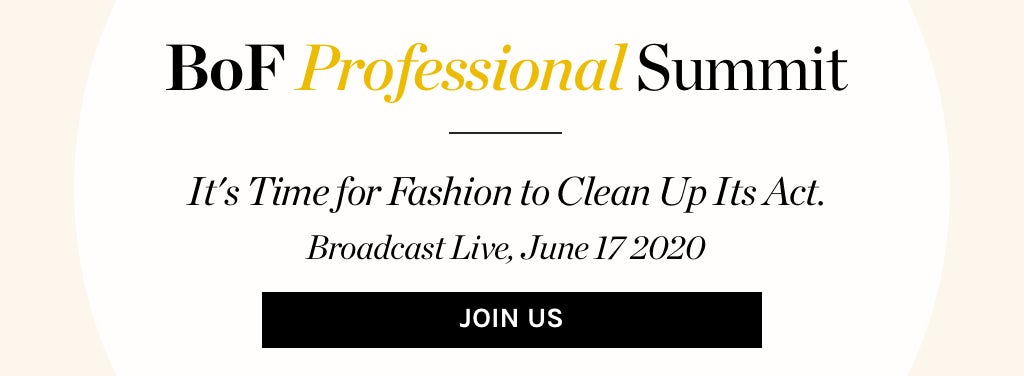How to Navigate the Workplace as a Minority Voice | Intelligence
Join us today June 17 for a half-day of online events exploring fashion’s responsibility to people and the planet as the world grapples with a climate emergency, racial injustices and a once-in-a-lifetime economic and public health crisis.
NEW YORK, United States — After over 14 years of working in the fashion industry, creative director Henrietta Gallina still finds she is often the only black person in the room.
It’s often hard work being the only minority voice at work, said the British-born, New York-based creative, who also co-hosts The Conversations podcast, where she covers the intersection of fashion, culture and the black experience. In the past when she’s spoken up in meetings about inclusive casting or raised her hand on issues of diversity or discrimination, she’s been shut down or branded as difficult. And yet, when white colleagues have a question about race, she’s the go-to for advice, regardless of whether she has expertise or knowledge of the issue.
“You can’t win for trying. I’m your ‘black counsel’ when it serves you, but, actually, when you need to hear something and I volunteer that information, suddenly I’m [pulling] the black card and all of a sudden you’re rolling your eyes,” she said. “It becomes this very uneven experience. You either feel used or you feel like you’re doing all the emotional labour and hard work in educating people.”
People of colour often find themselves in workplaces that aren’t diverse, placing a heavy emotional burden on their shoulders. “It’s a lot of pressure. It’s a lot of labour…especially when there are so few of us,” said Gallina.
It’s a lot of pressure. It’s a lot of labour, especially when there are so few of us.
The reignition of the global civil rights movement has placed a harsh spotlight on the fashion industry’s lack of diversity, as well as the systemic racism that disadvantages employees of colour across fashion’s sectors. Over the past few weeks, employees of colour speaking out on social media have exposed discriminatory cultures in workplaces across the industry, prompting many brand founders and editors in chief to resign.
The onus is fully on companies and their leaders to create inclusive, unbiased and diverse work environments. But change can be slow, especially within large corporations. Within fashion, many companies were largely silent about racial equity, minority rights and inclusion culture until pretty recently. The reality is that black, asian and other ethnic minority groups are underrepresented within fashion’s workplaces, especially among the upper echelons.
“That can sometimes be tough because there’s nobody else to talk about those issues with,” said brand and PR strategist and digital marketing consultant Quohnos Mitchell, who found himself to be one of few African American employees while working corporate fashion jobs.
At the same time, most employees often don’t have the luxury to simply quit their current jobs if management isn’t doing as much work as it should be to move forward.
In situations where companies have been slow to take action, what can minority employees do to protect themselves? How can employees best navigate some of these challenges that come with being one of the only minority voices in the workplace? BoF talked with experts, coaches and consultants to find out.
Keep others accountable
Employees in the minority will be all too familiar with workplace micro-aggressions — small actions, comments or subtle reminders that signal an individual is different because they belong to a marginalised group. Someone might be mistaken as having a more junior role than they actually do, or might be more likely to be interrupted in a meeting and have ideas overlooked.
Sofia Booth, a former employee and vice president of audience development of Who What Wear, recently took to social media to publicly share her experience working at the company. She previously told BoF one of the reasons she left was because she wasn’t given the same face time opportunities with the chief executive as her white colleagues were. “There were executive off-sites in which we were talking about my team’s remit and I was not given a seat at the table to speak on any of those topics,” she said.
Keep others accountable by relying on the facts, advised Pin-ya Tseng, consultant at diversity and inclusion strategy firm Paradigm. If someone makes a judgement, ask that person for examples that led them to that conclusion or opinion.
“You might be able to say, ‘Well, I’ve noticed that somebody else has behaved or performed similarly, but we’re not applying the same judgement to them, so why is that the case?’,” said Tseng. “It pushes that person to assess or evaluate whether what they’re saying is true, and whether it is biased.”
If discrimination or bias escalates, report incidents to the human resources team, advised Gallina. The effectiveness of HR teams can vary, especially as their main priority is protecting a company, but, if nothing else, at least concerns will be documented on the record, she said.
“The one thing that we don’t want to do is get into a situation where [employers] are like, ‘We have no idea what you’re talking about, you’re angry, so we’re just going to write this off,’” she said.
It’s also important to keep personal records of evidence, including any correspondence with HR. If an HR meeting happens in person, follow up with a written recap of what happened over email.
Prioritise your own mental health
Practice self-care and look after your mental health, said experts. No one person should be responsible for educating the whole working organisation about employee equity. It’s exhausting — and, ultimately, while employees can hold employers to account on issues of inclusion, it’s the company’s job to execute and follow through.
“Unless you are the diversity, equity and inclusion officer as part of your role that you’re getting compensated for, it is not your job to educate people on diversity equity and inclusion issues,” said Aiko Bethea, founder of RARE Coaching & Consulting, which provides executive coaching and diversity, equity and inclusion consulting services. “You have to honour what your own emotional capacity is.”
You have to honour what your own emotional capacity is.
Gallina stresses the importance of taking the time to “do the things that serve you,” whether that be spending time with your family, participating in activities and hobbies outside of work, travelling, or taking all of your paid time off.
Don’t take on unnecessary emotional labour
In her capacity as a coach for minority executives, Bethea often has clients in their 50s and 60s that harbour guilt about all the times in their career they didn’t speak up, or just let things slide. Considering what is most important to you will help you better understand when your boundaries are being breached and when you should speak up, she said.
“You have to be really intentional about where you assert yourself and your energy, so that you don’t have regrets, you’re honouring your values, but you’re also allowing yourself to self-sustain and to thrive,” she said.
In situations where individuals are faced with behaviour that has crossed the line, Lenora Billings-Harris, diversity strategist and author, encourages her clients to follow four steps: identify the behaviour that is making them feel uncomfortable; tell the perpetrator what that behaviour is; offer alternative options or behaviours that they are comfortable with; and explain the positive results that will come from this.
The objective, said Billings-Harris, is to help the person understand why the behaviour was uncomfortable for you. “You’re not speaking for everybody in your race or your gender or your sexual orientation, you’re just saying, one to one, between you and me, this is not acceptable,” she said. “The critical piece is you’re not attacking them or being accusatory. You’re simply saying, ‘I need you to do something differently, because this is not working.’”
Billings-Harris suggests thinking strategically about when to provide feedback. It’s important to be clear headed and calm when having that discussion, even if an incident has left you feeling frustrated, fearful or even angry. It’s fine to wait until later in the day or the following day to have the conversation. Practising with a friend or writing thoughts down on a piece of paper ahead of time can help, she said.
Stop criticising yourself
Imposter Syndrome — experiencing constant feelings of inadequacy, attributing successes to luck or tokenism, rather than talent and ability — is common among those that find themselves in the minority at work, said experts.
For employees of colour, that imposter syndrome is often reinforced by being the only person that looks like them within their workplace, said Minda Harts, assistant professor at NYU Wagner and chief executive and founder of The Memo, a career development platform for women of colour. “It’s a catch-22,” she said.
Beauty editor Khalea Underwood recently spoke out about her experience working at Refinery29 on social media, describing a mean girl culture left her “second-guessing everything that I did, wore, wrote, pitched, [and] said.”
It’s crucial to catch those moments of self-doubt by recognising what is happening and challenging the inner critic that’s fostering the negative thoughts. “You have to have a sense of self compassion and be able to self-affirm. Remind yourself: this is why I’m here. This is the value I’m adding. Of course I should be in this room,” said Bethea.
Changing one’s own mindset is easier said than done. Try to remember that constantly questioning your worth will only hold you back, said Harts.
“No one benefits when we’re cautious,” she said. “If we’re cautious and we’re always questioning [ourselves], we’re never going to be able to fully give that room what’s needed: our talent.”
Cultivate a support network
Support doesn’t only have to come from people who look like you. When you’re the only person of colour in your working environment, find an ally — someone who aligns themselves with a marginalised individual or group to help advance their cause, even if they don’t belong to that group. Having an ally in the room can help with tackling micro-aggressions and establishing your boundaries.
“If you’re going to advance in your career then obviously you’re going to need some people within the systems of the industry that are going to speak your name when you’re not in the room, who are going to be looking out for you and offering you opportunities like they do people who look like them,” said Harts.
Mitchell found allies an important part of his support network while working abroad as Tommy Hilfiger’s vice president of European communication, a position he held alongside vice president of global marketing and communications at Karl Lagerfeld. He found his most meaningful connections were with fellow expats who understood his American cultural identity.
“There are certain things that resonate past colour, like hard work or passion,” he said. “Find those mentors or people who can support you: they may not be people of colour, they may be people who understand your plight and can advocate for you.”
Allies might be found through friendships, or via an internal minority network, often known as employee resource groups (ERGs). However, support doesn’t have to come from within a work organisation. Seek out people within the industry, or that work in a similar sector, via external professional networks that focus on connecting minorities in a certain field, for example, the Black Journalists’ Collective.
Own your achievements
Champion your successes in the workplace. This could be through a chat with a senior leader at the watercooler, where you talk about your day, or it could be a more formal conversation with your manager during a quarterly appraisal. Be proactive and keep your own records, tracking achievements and documenting key successes.
“It’s about making sure that the ones that have power and influence know about the value you’re adding in the business,” said Suki Sandhu, founder and chief executive of Involve, an organisation dedicated to advancing diversity and inclusion within businesses.
Of course, for this tactic to be successful, it requires a workplace environment where individuals feel like they can have those conversations, he added. If you’re able to find a mentor within your organisation who can champion you, take advantage of their advice and expertise.
No longer can we keep our head down and work really hard, we have to lift our heads up and articulate our value and quantify our worth.
It’s worth investing in your own development, said Sandhu, especially if your company is not providing opportunities that you need to get to the next level.
This could be taking a course to develop your professional skills or doing your own career mapping. Take advantage of free training resources or sign up for a course. Fostering professional networks are important too.
“No longer can we keep our head down and work really hard, we have to lift our heads up and articulate our value and quantify our worth,” said Harts. “And if people ask how can they help, be ready with your ask.”
Related Articles:
Fashion Has a Diversity Problem on the Business Side, Too



